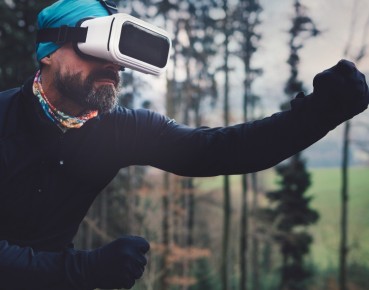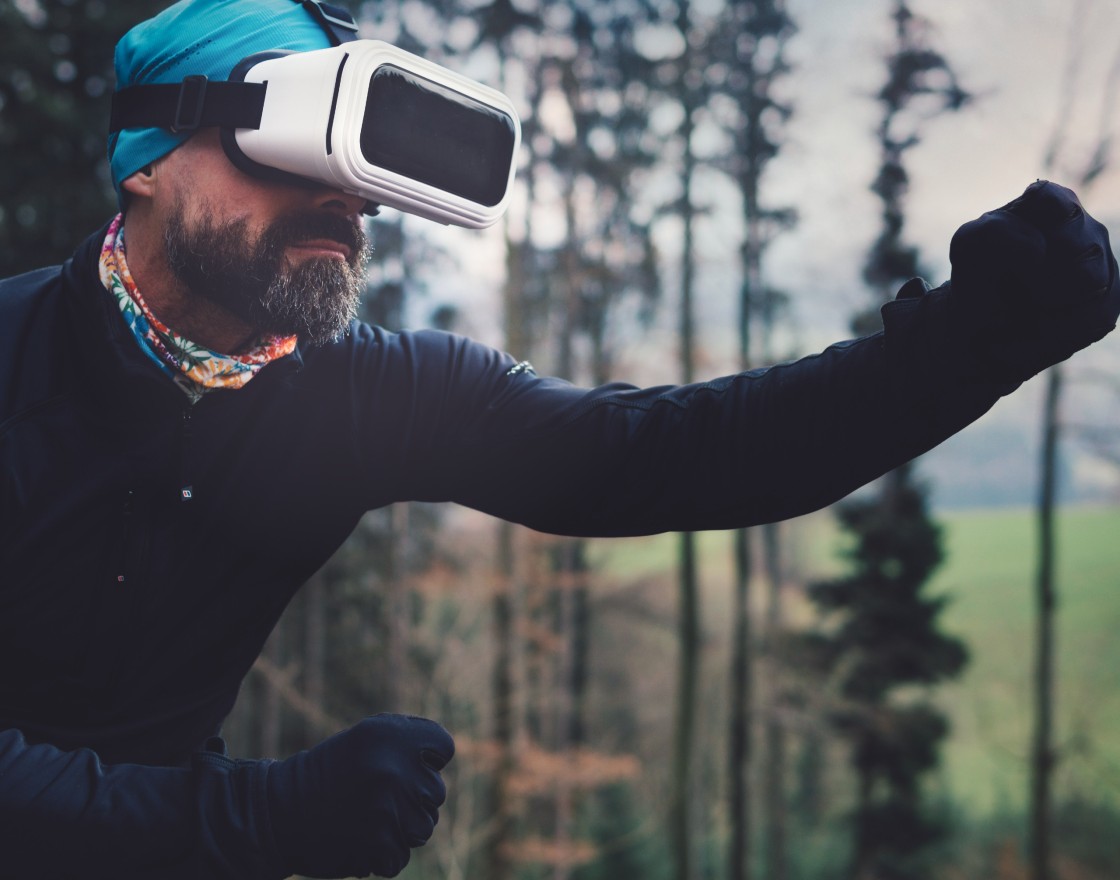
(Top Ten Alternatives, CC BY 2.0)
Virtual reality in hard academic language is determined as the use of a three-dimensional computer-generated environment, called a virtual environment, that can be navigated through and possibly interacted with, subsequently generating a real-time simulation for user’s senses. Virtual reality technology typically involves the use of a VR headset, which helps to immerse in a digital environment. Through the use of images, sounds and other physical sensations, the user is essentially placed within a virtual world, in which he can move around and, in some cases, interact with. Highly focused on interaction, imagination and immersion, this technology is a basis for a lot of entertainment industries. Marketing is one of them and particularly so in the tourism business. If we look at tourism fairs around the world in the last few years, we can easily see the exponential rise of virtual reality technology in use for tourism marketing and purposes.
Travel trade fairs went online
The global lockdown changed things drastically. In March 2020, one of the world biggest tourism events, Berlin’s ITB convention, went online. Despite cancelling, ITB is offering its services 365 days a year by launching a website. The world’s leading travel fair is establishing a completely new online platform for the global tourism industry. The tourism network is based on Artificial Intelligence (AI), is a learning system and constantly offers relevant contact information for the travel industry. The network can be accessed by all registered participants of the ITB Berlin 2020, i.e. trade visitors, congress participants, exhibitors and media representatives. Virtual rooms where users can hold meetings, which they have scheduled before ITB Berlin, are available online. The video connection allows face-to-face meetings, but it is also possible to communicate only via an audio connection. Thus, not only the whole paradigm of doing business in tourism has changed, but also the way we travel.
Some agencies have focused their efforts on non-cash types of incentives, such as consumer goods, education, vouchers, etc., as well as on the organization of virtual events. The organization of events has a virtual and hybrid form, but creating lasting memories through authentic local experiences and encounters with people and places is difficult. However, there is an opportunity to organize individual incentives, i.e. create a portfolio of attractive excursions that can be placed through existing corporate clients, maintaining these important business connections until group incentives return. These unique experiences can also be sold directly to individuals through a dedicated website. Thus, with a small turnaround and investment in technology, a new revenue stream can be created without the need to go beyond area of expertise.
Virtual reality as a new marketing tool
It is a well-established fact that an image of a destination can affect visitors’ destination choices in all stages of travel. Once covered by leaflets and TV commercials, today marketing is developing a mobile interactive image. Investments in highly developed technology forces tourism business to be constantly up-to-date and look for new and improved ways of promoting and targeting customers. The goal is to deliver a preview experience of attractions and sites, hotels, cruise ships, restaurants, natural sites. And is in-line with tourism’s sustainability defined by the United Nations World Tourism Organization as tourism that takes into account its current and future social, environmental and economic impacts, as well as needs of visitors, the environment, industry and host communities. As such, it involves environmentally friendly tourism, minimum impact tourism, soft tourism, responsible tourism and alternative tourism.
A recent research suggests that 3D modelling and computer-based simulation can be effective in planning and managing sustainable tourism. Collective data on visitors can be used to estimate threats, opportunities and areas for further development in the sustainable tourism areas. In 2018, a major Russian tourism operators developed corporate strategies for sustainable tourism options through virtual travel as a sustainable alternative to nature tourism at locations where physical capacities have been already reached or in areas reserved for nature protection. But, as one would expect, virtual travel, as an alternative to travelling to real destinations, was largely criticized. This may change with the outburst of COVID-19 pandemics. The various researches indicate that tourist locations and destinations should provide opportunities to visitors. If the virtual world is seen as a valuable information basis for trip planning, then virtual tourists have a chance to get their travelling needs easily fulfilled.
According to a recently released report, the global virtual reality market is expected to grow from last year’s USD7.9bn to USD44.7bn by 2024. Although these technologies have been around for several years, certain factors have limited their reach in the tourism industry. Several restaurants, airlines and travel companies have released easy-to-use virtual features in recent years that are beginning to change the way people plan and experience travel. Within its application, the Dutch airline KLM offers the “Tune into your Travel” feature, which is designed to entertain passengers while waiting for a flight. Using Facebook and smartphones travelers can interact with a variety of animated characters and view landscapes from several destinations. In November 2018, KLM introduced the online platform iFly, which offers the opportunity to discover the world with the help of the latest technology. 360-degree videos can be watched by anyone with a computer or smartphone, and if they have VR headset the experience will be even better.
Post-pandemic tourism
Coupled with tremendous losses in 2020 and 50 million jobs lost worldwide, tourism stakeholders ask not only for bailouts but also increased financing of travel promotion. With virtual reality technology, this may be achievable at a lower cost. It is not only promotion but also a potential tool to fulfil many travelers’ needs. Virtual reality can create almost realistic, easy and detailed navigations for tourists to help them in their planning processes. It provides first-hand information about important facts and factors relevant to their decision-making. Interactivity, low costs and convenient translation capabilities add to that. One can now virtually visit the hotel rooms and consider their offers. Most hotels and resorts rely heavily on delivering excellent customer service to build their reputation and AI technology can assist in a wide variety of ways. For example, AI can be used to improve personalization, tailor recommendations and guarantee fast response times, even in the absence of staff.
At the same time, the possible threat is that virtual travel will substitute the real one. Some potential tourists are intimidated by the existence of potential geographical barriers and by fears, such as fear of heights, and of dangerous and far locations, terrorism and illness in certain destinations, and thus would only visit them virtually. There are now dozens of travel agents catering exclusively to this kind of virtual tourists. But the most important thing in the physical world is its authenticity. The share of virtual tourism will grow but will it replace traveling and contact with real people and nature? Let’s hope it will not.

